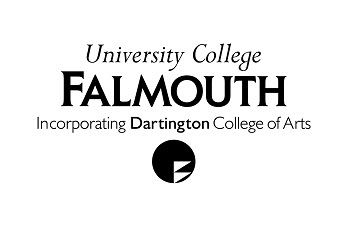As expected, the last day of my placement at the University of the Arts Berlin Archive came around far too quickly. In the morning I was given a tour of the other University buildings to gain more of a sense of the history of the Schools. They are located about a ten-minute walk away from the building I'd been working in where the Archives are held. There is a complex of three buildings: the original schools of Fine Art and Music built in 1902, and the modern Concert Hall. The original concert hall was built as part of this complex in 1902 but was destroyed during the Second World War. Both buildings are still used for their original functions - for the teaching of music and the fine arts. Walking around the Arts building was particularly interesting. Dotted around the building were examples of different styles of architecture for the pupils to study - medieval, baroque, classical etc. This pair of neo-classical pillars appeared at the top of a staircase:
 |
Example of neo-classical architecture at the Fine Arts building
© Mary Allen |
The style of the two existing original buildings from 1902 is Baroque, but I found this medieval-looking doorway at one the back entances of the Fine Arts building:
 |
Another example of architecture at the Fine Arts building
© Mary Allen |
It was an interesting day to visit the Fine Arts building as the whole University had just been opened up for the 'Rundgang' - end of year exhibitions and shows. The previous night the building had played host to a huge party for students and members of the public for the opening night. The morning we looked round the evidence of the night's events hadn't quite been cleared away and there was a certain amount of hopping over beer cans to be done!
Back at the Archives Dr Schenk showed me some early examples of student artwork. One was a project by students in 1898 to re-design the room that belonged to Martin Luther in the Luther family home in Wittenburg. This sketch shows how the room looked at the time:
 |
Sketch of Martin Luther's room, Wittenburg, 1898
© Mary Allen |
The next piece shows the design they came up with:
 |
Design for the room of Martin Luther, Wittenburg
© Mary Allen |
I decided to look up the Luther House to find out some more information. I came across
this site which shows how the room looks today and was rather excited to see that it looks pretty much identical to this painting! So it must have been used for the reconstruction of the room.
I loved this etching from the 1920s, which is best viewd close-up to see the detail which is incredible considering it is a relatively small image, about as wide as an A4 sheet of paper:
 |
Student work from the School of Fine Art, 1920s
© Mary Allen |
 |
Detail from the image above
© Mary Allen |
This is a carictature by German artist George Grosz while he was at the School:
 |
Caricature by George Grosz, c.1910s
© Mary Allen |
Grosz became famous for his savage caricatural paintings of Berlin life in the 1920s and was a prominent member of the Berlin Dada and New Objectivity group before he emigrated to the United States in 1933. After his emigration, Grosz rejected his earlier work and caricature in general.
I was also shown this very important and incredibly poignant file which lists all students of Jewish descent at the Art School between 1933 and 1937. As soon as the Nazi Party came to power in 1933 they began to focus on limiting the participation of Jews in public life. One of the first laws passed, in April 1933, was to restrict the number of Jewish students at schools and universities.
 |
File listing puils of Jewish descent at the College of Fine Arts
© Mary Allen |
This page from the file shows how a family tree was drawn out for each student. Jewish parents or grandparents were coloured in red. If it was found that the student was Jewinsh, they would also be coloured in red. It seems from this page that those with one Jewish grandparent were not considered Jewish, and those with two Jewish grandparents were generally considered not Jewish although there is one exception here.
 |
Jewish students at the College of Fine Arts
© Mary Allen
|
The last student on the page is Charlotte Salomon, a student of painting at the College of Art. Despite German universities restricting their 'Jewish quota' to 1.5 per cent of the student body, Salomon was able to get a place at the College in 1936 and continued to study there until the summer of 1938 when she was forced to leave. After this, she lived in the South of France as a refugee until 1943 where she painted a series of 769 autobiographical paintings entitled
Life? or Theatre?. In 1943 she gave the work to a trusted friend asking him to keep it safe. That same year was transported to Auschwitz.
 |
Charlotte Salomon, Jewish student at the College of Fine Arts
© Mary Allen |
There have been many exhibitions of Salomon's work since the 1960s, including an exhibit at the Royal Academy, and plays and films written about her life.
Germany has a fascinating history and it was interesting to see how it has shaped the country's archives, particularly in the modern era with one extreme dictatorship being replaced by another as seen through documents like this and the archive of the Foundation for the Reappraisal of the SED Dictatorship.
By the end of my placement I felt I had learnt a lot about the Archive at the University and German archives in general. A lot of their theory and practice is very similar to ours but it was interesting to learn of some differences, like their Archive Law and the way of referencing their collections. I think having knowledge of these will be really useful while I'm doing my MA. I would totally recommend a placement abroad to broaden your knowledge of archival theories and practices if you ever get the chance. I would also really recommend a visit to Berlin: it's a fantastic city and I can't wait to go back one day!












No comments:
Post a Comment